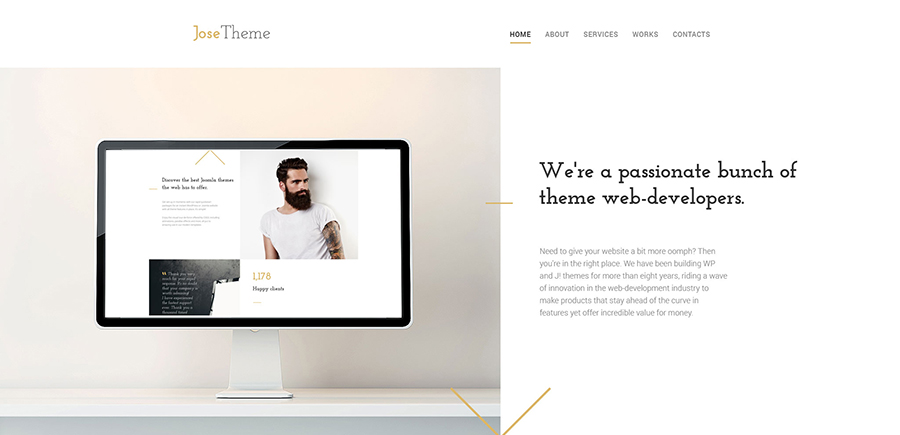4 Simple Truths for Effective Web Design
Steve Jobs once said, “Simple can be harder than complex: You have to work hard to get your thinking clean to make it simple. But it’s worth it in the end because once you get there, you can move mountains.”
Simplicity is indeed difficult to get to in today’s chaotic, sensory-saturated, gotta-get-somewhere-fast world. Nowhere is this more evident than on the internet. There’s over 1 billion websites in use right now, all working to be relevant; all working to simply be noticed.

This drive to be recognized in the cyber world, whether you’re a business mogul running a multimillion dollar company or someone taking the first steps in creating a blog, can cause people to over-complicate things. When you push hard to create something that sets your website apart, it is easy to lose sight of some simple, foundational truths that make your web page strong.
1. Clarity: What you choose NOT to say is as valuable as what you DO say.
For the most part, when people click on a website, they don’t want to be bogged down by having to slog through paragraph after paragraph in search of answers, they want to know what they need to know quickly and cleanly. It iseasy to overlook strong communication amid all the graphic elements that give websites their pizazz. Still, it is of crucial importance that everything written on your webpage be unified in the purpose of communicating what you and/or your company are about. Anything that strays, even a little bit, from this goal needs to be cut out.
2. Graphics: Use space wisely, even when it’s empty.
In the old newspapers, there was an attitude of cramming every available inch of available space full of information. Common sense would say you get more for your money that way. But, a website is not a newspaper and the “cram it full” philosophy does not work well in the visual world of the internet. Don’t be afraid of empty space (also known as negative or white space). By using unoccupied space well, you bring clarity and elegance to the occupied space around it.
Also, theeffective use of negative space creates a quiet tone of confidence. Look at Google’s search page: a word embedded in a simple graphic, a text bar and a big dose of negative space all comes together to form the portal into the world’s most popular search engine.
3. Usability: Even though it’s your page, think like a visitor.
Sometimes, when we get so caught up in telling people what we know, we lose sight of knowing what they want to hear. Remember, the one with the mouse or finger pad has the ultimate say when it comes to the effectiveness of your site. If visitors don’t find something interesting, useful or clickable quickly, they will hit the dreaded “back” button and continue their searching elsewhere. Be conscious of what a person will see and encounter when your page materializes in front of them. Also,limit the amount of choices someone will have to make throughout your site. The more options people have in making a decision, the more difficult it will be to arrive at one.
4. Accessibility: Come off the page and interact
While it is of vital importance that your website offers easy access to your ideas or products, it is also extremely important that you give the visitors to your page access to you as well. A key to establishing and maintaining loyalty in people occurs when they feel like they’ve been heard.
There are a number of ways you can create opportunity for interaction. Linking with social media networks is an easy way to establish personal communication lines. Email correspondence is tried and true, as is a good, old-fashioned “comments” section somewhere prominent on your page. There are even ways to schedule and carry out a live chat with those who frequent your page. The important thing to remember is that showing a willingness to listen to what your patrons have to say goes a does a great deal in their willingness to hear what you have to say.
Simplicity can move mountains. The governing principles behind good web design are not complicated or illusive. They are firmly planted within common sense and they will go farther in the success of your website than the flashy bells and whistles that so often emerge in our desire to get ahead.


